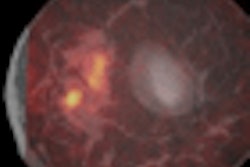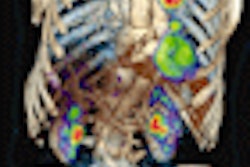
"If you build it, they will come" was the philosophy many radiology practices believed earlier this decade. After the passage of the Deficit Reduction Act (DRA) of 2005 and increases in facility costs, radiology practices have been forced to look for creative ways to increase their patient volume.
Although this article will focus primarily on PET/CT, many of these principles can be applied across all imaging modalities.
 |
| Kevin M. Reilly |
Radiologist steps to success
Accuracy, turnaround time, and follow-up are all important elements that a practice should consider when reading a patient's PET/CT images. Developing trust in a local community depends upon the accuracy of the PET/CT interpretations. If the interpretation is unclear and doesn't define an exact answer to the referring physician's question, odds are it is not bringing value to the referring physician and the patient. What will referring physicians think of the interpretations if they do not bring value to their decision-making when managing their patients?
Many referring physicians and radiology practices believe their PET/CT reports should be read and finalized within 24 hours. Besides giving patients the best care with a 24-hour turnaround time, it also allows a radiology practice to bill out an expensive procedure much faster.
The days of faxing a report and burning images on a CD are fading. With faster online connections and younger physicians joining practices, requests for online images and report access are much more prevalent than five years ago.
If there is an abnormal PET/CT case, it is crucial to follow up with the referring physician by phone or in person. This helps to build trust between the radiologist and the referring physician. If a radiologist follows up with a referring physician after a PET/CT case is read and changes the course of management, chances are the referring physician will continue to send patients due to the immediate response from the radiologist.
Protocols, technologists, and ease of scheduling
Differentiating imaging protocols, technologist PET certification, and ease of scheduling are also important factors to consider. With the availability of 64-slice PET/CT scanners, the optimal techniques for PET/CT image acquisition are essential. Many centers are lengthening the patient incubation period in the injection room or are processing delayed images for certain indications to provide more information for interpretations.
Having a technologist certified exclusively for PET (contact your state to see if this is possible) is a great marketing tool in promoting a facility's PET/CT service. This can be promoted as an additional way in which a practice is taking steps to ensure the referring physicians' patients are being treated with the utmost care.
Another important component of success is the ease of patient scheduling. Patients feel more comfortable talking with someone about their upcoming exam, rather than waiting or being put on hold while a scheduler is busy with another patient. The more time a scheduler sets aside for explaining the proper PET/CT preparation, the more patients will arrive on time and be scanned right away. Referring physicians want accurate and timely results. The faster a radiology facility can turn around a report, the more likely the referring physician's office will keep sending patients to the same radiology facility.
Marketing strategies
A crucial element to the success of any radiology practice is the marketer or marketing team. A marketer builds the awareness of the PET/CT modality in the community, creates a reputation for a facility, and bridges communication between the radiology practice and physician offices. A marketer has the ability to explain a center's differentiating factors from the competition, hand out brochures, send direct mailers, update a practice's Web site, smooth over issues, establish relationships, organize open houses, and, most importantly, educate the referring physician community.
When a center opens or installs a PET/CT scanner, the marketer can have a great impact by educating the referring community about the new installation and availability of the service. Creating direct mailers targeting different physician specialties, creating referring physician PET/CT brochures, and setting a date for an open house are all great ways to market a radiology practice.
Initially focusing efforts on building local relationships with oncology, pulmonary, and internal medicine groups is important to building success. Creating a local three-week routing schedule of what offices to visit on a consistent basis can build relationships and address any concerns an office has with the PET/CT service.
When a marketer feels comfortable with local physician offices and key players, it's an ideal time to start visiting offices outside the local community to bring additional volume. Consistent visits by a marketer are important and can be achieved by creating five- to six-week routing plans in the local and outside markets.
After six to eight months, the community should be fully aware of the radiology center's PET/CT service. The next steps are to work toward establishing the center as an educational resource for the referring physicians, and to raise awareness of potential referral opportunities. A marketer can do this by creating monthly PET/CT case studies using a center's own cases. An initial focus should be toward lung cancer, lymphoma, and breast cancer, because they are the most prevalent indications according to U.S. cancer statistics.
When explaining a case study, it's best to keep it brief and to-the-point to attract a physician's interest. Asking the center's radiologists how to explain these cases to the local community is recommended.
Another great marketing idea is to explain the latest Medicare reimbursement approvals in PET/CT or recent industry news to physician offices. A marketer can stay updated on the latest topics through AuntMinnie.com, the SNM's Web site, RT image, or the Medicare Web site.
It's extremely important to get radiologists to visit physician offices or local tumor board meetings to build PET/CT volume. This will help establish direct relationships, create a local name for the radiologists, and allow a radiology practice to build PET/CT treatment patterns for many indications.
Setting up a round-table meeting with a physician group will lead to better PET/CT management of patients and more accurate results from interpretations, as well as reduce unnecessary surgeries for the local patient community. Getting a group of physicians together to discuss treatment patterns can be difficult, but when it occurs, the patients benefit from the proper utilization of PET/CT.
All of these principles are important to contribute to the success of a radiology practice. With great radiologists, educational PET/CT marketing strategies, easy scheduling, and proper image acquisition, a radiology center's patients can be managed properly, and the practice will establish itself as an educational resource to the local physician community.
By Kevin M. Reilly
AuntMinnie.com contributing writer
September 4, 2009
Kevin Reilly has six years of experience assisting imaging centers and hospitals on how to increase their PET/CT volume. He has provided marketing advice and seen how centers have used these principles to work toward creating a standard of care for PET/CT patients. He studied marketing principles while completing his MBA in marketing at Baruch College. Feel free to contact Kevin Reilly at [email protected] regarding questions and comments.
Related Reading
The Profit Center: Part 4 -- Creating an 'experience monopoly,' July 3, 2009
Navigating PET/CT's logistical and legal issues, April 24, 2006
Copyright © 2009 Kevin M. Reilly




















